Black Rhino quietly moving through the bush
We have all heard the dire stats around rhino, but for the sake of making a point, let me just repeat here that in the case of the black rhino there are currently roughly 4900 left in the wild, and at the current rate of poaching they will be extinct by about 2020. To complicate matters, black rhino are notoriously aggressive, in particular a mother protecting her child, and allegedly about 50% of rhino deaths are due to them fighting amongst each other. Not very helpful, everything considered!
The Zimbabwean reserve where I have been staying now for the last two months whilst following the FGASA field guide training, have a number of black rhino within the boundaries of their fence, which exists for the sole reason of protecting the rhino. No one here likes having a fence around a natural reserve, but there is sadly no choice if you are going to have rhino as a resident species. Besides the fence, other protective measures include 24/7 patrolling of the fence by multiple anti poaching units armed to the teeth, and sawing off rhino horns to make them less attractive to poachers. Removing their horns is yet another necessary evil that no one here is pleased with, but better to have a live than dead rhino with a stump for a horn.
Horns do grow back as they are essentially similar to our finger nails, and thus it is a reoccurring conservation activity here to catch rhino and remove its horn. Recently another rhino capture was held for other reasons. As mentioned before, rhinos fight and do kill each other, or get each other killed indirectly. For instance, last year one of the young bulls was killed by a crocodile because his father had chased him into the river. And now that another young bull was reaching the age of sexual maturity, it had to be captured pre-emptively to avoid its father killing it, something that is sadly likely to happen. So we now have a rhino that is held in a boma within the reserve, letting it adjust to its new situation before a new home will be found for it. This is the unfortunate reality around these animals.
These recordings here illustrate regular activities of black rhino as they silently move through the bush. The first recording at the top of the page is of a mother and calf, walking through the bush on the edge of a lake. You can hear one of them snapping off branches in the left channel at the beginning of the recording. This is an indicative sound of black rhino feeding. My guess is that it was the calf doing this as with black rhino, the calf tends to follow the mother (white rhino do the reverse, likely because they are grazers and thus have their eyes on the ground while feeding – black rhino browse). Black rhino calves also tend to play with sticks and branches, as they usually have no playmate.
In the second recording on this page, we can hear what appear to be a male and female black rhino slowly shuffling along a sandy patch of soil, which is frequented often by big mammals due to its high concentration of sodium and other nutrients. Animals such as rhino, elephant and others practice something that is called geophagia, or ‘eating dirt’ in laymen’s terms. Another popular attraction at this particular site are the mud wallows, used for getting rid of ticks and for cooling down skin. We can hear these two quietly walking around, sniffing at each other, scuffing into the sand, taking a little splash in the mud every now and then, and also urinating into the bush. Somewhere halfway in the recording, one of the two seems to have been startled by the presence of the equipment cage, as there is a very loud and close snort. Rhinos have fantastic hearing, but their eyesight isn’t much to write home about.
The final recording on this page is again a rhino visiting the same site, but this time something about the sand (maybe it got it in its nose or perhaps it tasted off) seems to have slightly upset it as we can hear it spluttering somewhat comically, before it totters off into the distance with its signature hopping and slightly irregular trot.

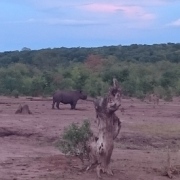
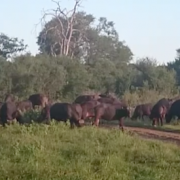
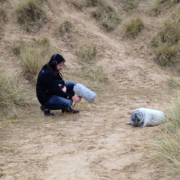

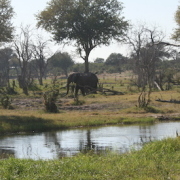
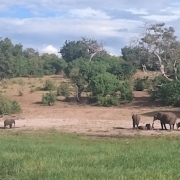

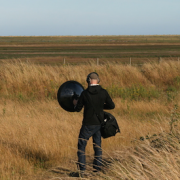



Leave a Reply
Want to join the discussion?Feel free to contribute!